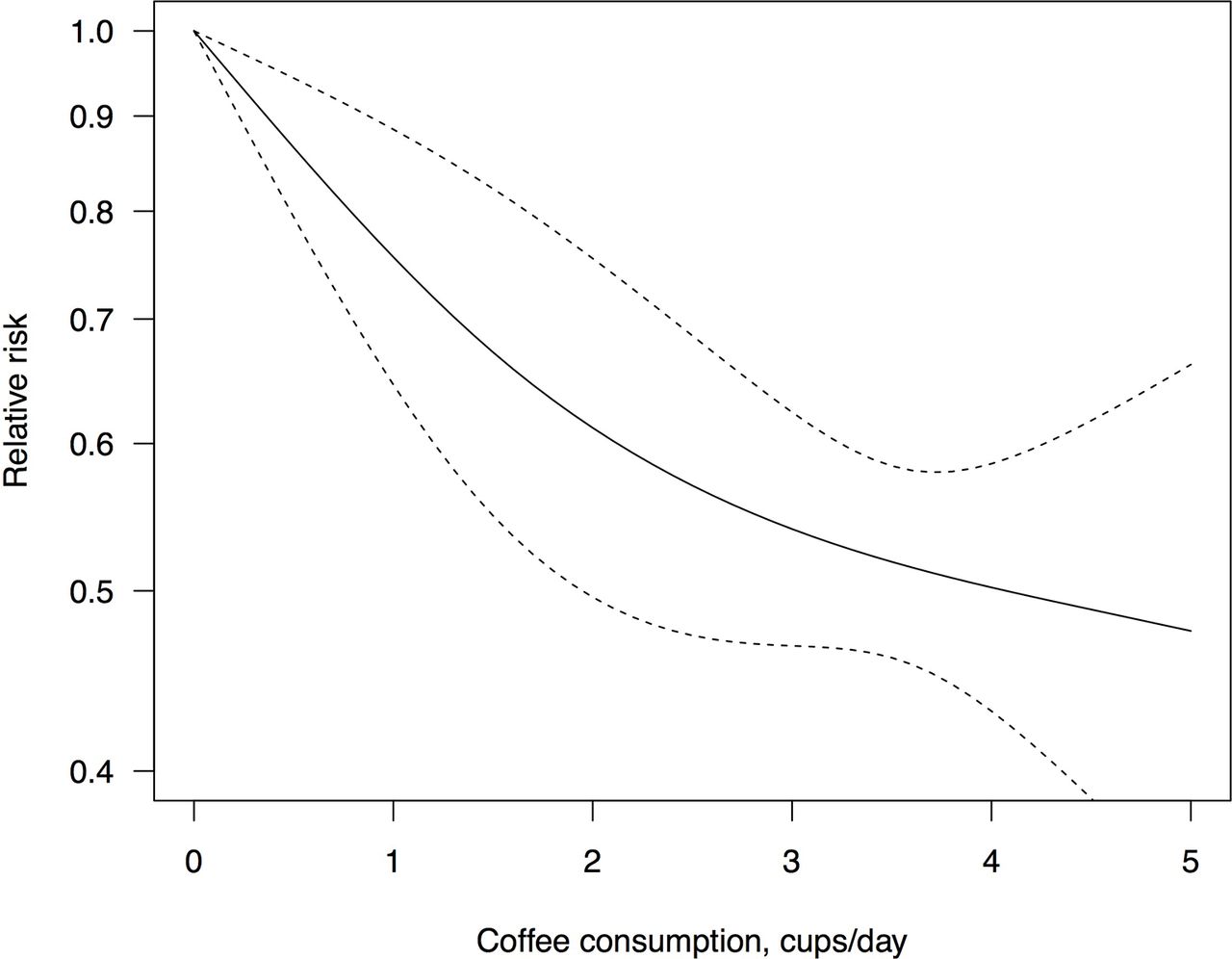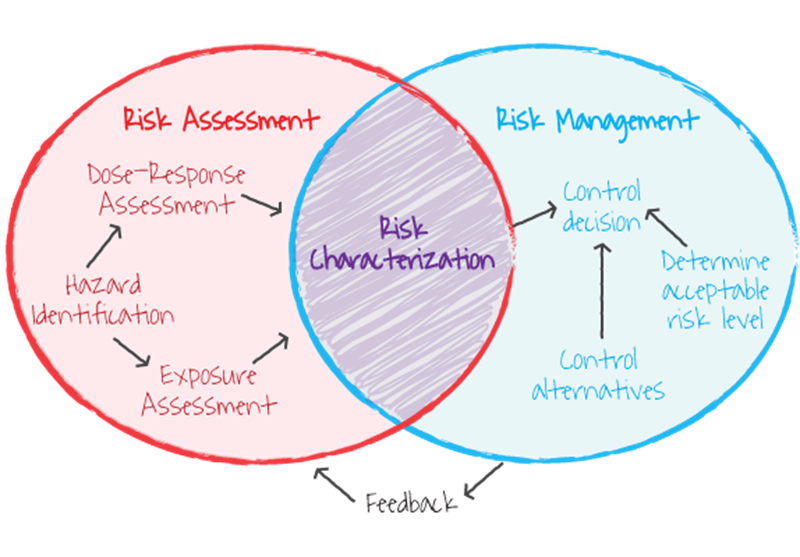Risk Assessment in Toxicology
The following scheme characterizes the process of risk assessment:

Risk assessment is the process that incorporates the analysis of several data sets. Its goal is to give the rate of potential for an adverse effect of chemical exposure on human health (Roberts, James, & Williams, 2015). Firstly, the hazard should be identified, explaining what acute state or illness a person may get after being exposed to a studied substance. Dose-response measurement tells how many people experience health issues depending on the quantity of a chemical. Exposure assessment studies how much, in which ways, and in what time the substance affected people in each case. A combination of this data allows predicting how many people will receive health issues after being exposed to a chemical.
Dose-Response Data

A dose-response relation demonstrates how many organisms were affected by a chemical substance. It can be an adverse reaction like the response of people on different amounts of nicotine. Positive effects like a therapeutic influence of corticosteroids on patients with acute allergic reactions are also considered. This graph shows a correlation between coffee consumption and the risk of developing hepatocellular carcinoma. Research suggests that extra two cups reduced the risk of HCC by 37% (Kennedy et al., 2017). It is explained by the components of coffee, including chlorogenic acid and diterpenes, which possess anticancerogenic properties. Risk assessment in this case would include the analysis of exposure types, including frequency and the method of consumption, combined with the dose-response data.
Risk Management
Risk management may be viewed as a series of plans and activities targeted at reducing or eliminating risks to human health and safety. It is executed based on a set of factors determining the possibilities and the scope of decisions. The first category includes data from various fields of science, offering data for risk assessment (Risk management, n. d.). Economic, legal, social, and political factors may determine whether the initiatives would be expensive, supported by the government, or accepted by a community. Technology is also important as it limits the possibility of implementing risk management ideas with the level of its current development.
Risk Assessment & Management

While risk assessment is based on receiving knowledge about substance’s negative influence, risk management represents actions required for eliminating it. After collecting and analyzing hazard, dose-response, and exposure data, and accessing risks, the latter are being characterized. Estimations are made depending on the conditions of exposure to a chemical and their correlation with the number of effects on human health. The process of decision-making begins, as possible solutions are matched with the existing possibilities influenced by the factors mentioned above. Once an acceptable risk level is determined, and alternatives are discussed, a control decision is implemented as the principal risk management strategy. Afterward, the feedback is collected by performing another risk assessment with the corresponding steps.
Fields of Toxicology
There are several fields of toxicology that are associated with environmental safety and health. For instance, occupational toxicology helps to determine if there are any hazardous exposures for workers in commercial buildings. Environmental toxicologists study the normal living conditions of people, including their homes, outdoor areas, and larger territories with air, land, and water resources. Regulatory toxicology specialists develop codes and standards, as well as recommendations on how to minimize health and safety risks from substance exposure, which would be issued on the governmental level. Their guidelines are to be used by administration officials to enforce safety rules on different levels.
Environmental Toxicology
Environmental toxicology is an applied field of studies that broadly researches the effect of chemicals on health and safety. For example, it can include risk assessments of various pesticides used in agriculture regarding their impact on workers and consumers (Roberts et al., 2015). The toxicity of household chemicals like cleaning substances is also studied. If industrial facilities release pollutants in the air or water, this also becomes a field for environmental toxicology inspection. Even emissions from cars and public transport that people encounter every day are researched by this division. Environmental toxicology does not focus only on human health and safety. Issues such as risks of pesticides for bee populations, for example, also belong to the scope of activities for this field.
Chemical Fire in Texas
The example of fire in Deer Park, TX, demonstrates the functions of toxicologists associated with environmental health and safety. On March 19, 2019, a fire occurred on a local plant, which rapidly developed and covered a large area (Moon, 2019). The smoke elevated more than 4,000 ft high and traveled miles from the site. One company sent its workers home, and several schools canceled classes. Specialists from the Center for Toxicology and Environmental Health were contacted to assess the risks. They concluded that the level of contaminants in the area was not exceeding the action level.
The chemicals for which the area was tested included naphtha, xylene, PM2.5, and PM10. The air around the fire area was tested for the microscopic particles of those substances. All tests showed data that did not exceed hazardous levels. At the same time, people were warned by the local health department about adverse effects they might get caused by toxic emissions: those included cough, nausea, headache, and mental health issues. However, workers and residents admitted having problems with the respiratory system, as well as itching throats and feeling of burning in the eyes (Moon, 2019). The Center of Toxicology and Environmental Health could have presented the wrong risk assessment data.
References
Interaction between processes of risk assessment and risk management. (n. d.). [JPG file].
Kennedy, O. J., Roderick, P., Buchanan, R., Fallowfield, J. A., Hayes, P. C., & Parkes, J. (2017). Coffee, including decaffeinated coffee, and the risk of hepatocellular carcinoma: A systematic review and dose-response meta-analysis.BMJ Open, 7(5).
Kennedy, O. J., Roderick, P., Buchanan, R., Fallowfield, J. A., Hayes, P. C., & Parkes, J. (2017). Results of a cubic spline dose-response meta-analysis of the association between coffee and hepatocellular carcinoma [JPG file].
Moon, E. (2019). A chemical fire in Texas has been extinguished, but questions over safety linger. Pacific Standard.
Risk management. (n. d.).
Roberts, S. M., James, R. C., & Williams, P. L. (2015). Principles of toxicology: Environmental and industrial applications (3rd ed.). Hoboken, NJ: Wiley.